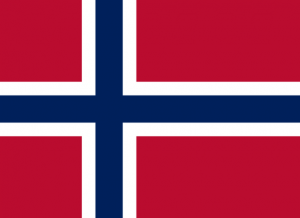Difference between revisions of "Language/Norwegian-bokmal/Grammar/Personal-Pronouns"
(Created page with "Personal pronouns are essential components of any language, as they help us refer to people without constantly repeating their names. In Norwegian Bokmål, personal pronouns are divided into subject and object pronouns. This lesson will introduce you to the personal pronouns in Norwegian Bokmål, along with some basic rules for their usage. Subject Pronouns Subject pronouns are used as the subject of a sentence, i.e., the person or thing performing the action of the ve...") |
|||
| Line 1: | Line 1: | ||
{{Norwegian-bokmal-Page-Top}} | |||
<div class="pg_page_title">[[Language/Norwegian-bokmal|Norwegian Bokmål]] → [[Language/Norwegian-bokmal/Grammar|Grammar]] → [[Language/Norwegian-bokmal/Grammar/0-to-A1-Course|0 to A1 Course]] → Personal Pronouns</div> | |||
__TOC__ | |||
{{Norwegian-bokmal-Page-Bottom}} | |||
Personal pronouns are essential components of any language, as they help us refer to people without constantly repeating their names. In Norwegian Bokmål, personal pronouns are divided into subject and object pronouns. This lesson will introduce you to the personal pronouns in Norwegian Bokmål, along with some basic rules for their usage. | Personal pronouns are essential components of any language, as they help us refer to people without constantly repeating their names. In Norwegian Bokmål, personal pronouns are divided into subject and object pronouns. This lesson will introduce you to the personal pronouns in Norwegian Bokmål, along with some basic rules for their usage. | ||
| Line 44: | Line 57: | ||
Personal pronouns play a vital role in everyday communication in Norwegian Bokmål. By understanding the differences between subject and object pronouns and practicing their use, you will be well on your way to becoming more proficient in the language. Remember to pay attention to the context and the appropriate level of formality when using personal pronouns in Norwegian. | Personal pronouns play a vital role in everyday communication in Norwegian Bokmål. By understanding the differences between subject and object pronouns and practicing their use, you will be well on your way to becoming more proficient in the language. Remember to pay attention to the context and the appropriate level of formality when using personal pronouns in Norwegian. | ||
{{#seo: | |||
|title=Norwegian Grammar → Personal Pronouns | |||
|keywords=Norwegian Bokmål, grammar, Norwegian Bokmål course, beginner level, A1 level | |||
|description=Learn how to use the Personal Pronouns in Norwegian Bokmål. | |||
}} | |||
{{Norwegian-bokmal-0-to-A1-Course-TOC}} | |||
[[Category:Course]] | |||
[[Category:Norwegian-bokmal-Course]] | |||
[[Category:0-to-A1-Course]] | |||
[[Category:Norwegian-bokmal-0-to-A1-Course]] | |||
Revision as of 13:50, 21 March 2023
Personal pronouns are essential components of any language, as they help us refer to people without constantly repeating their names. In Norwegian Bokmål, personal pronouns are divided into subject and object pronouns. This lesson will introduce you to the personal pronouns in Norwegian Bokmål, along with some basic rules for their usage.
Subject Pronouns
Subject pronouns are used as the subject of a sentence, i.e., the person or thing performing the action of the verb. In Norwegian Bokmål, the subject pronouns are as follows:
- jeg (I)
- du (you, singular and informal)
- han (he)
- hun (she)
- den/det (it) - "den" is used for masculine and feminine nouns, and "det" for neuter nouns.
- vi (we)
- dere (you, plural and/or formal)
- de (they)
Examples:
a. Jeg spiser frokost. (I eat breakfast.) b. Du leser en bok. (You read a book.) c. Han løper. (He runs.) d. Hun synger. (She sings.) e. Vi arbeider sammen. (We work together.) f. Dere bor i Oslo. (You live in Oslo.) g. De studerer norsk. (They study Norwegian.)
Object Pronouns
Object pronouns are used as the object of a sentence, i.e., the person or thing affected by the action of the verb. The object pronouns in Norwegian Bokmål are as follows:
- meg (me)
- deg (you, singular and informal)
- ham (him)
- henne (her)
- den/det (it) - "den" is used for masculine and feminine nouns, and "det" for neuter nouns.
- oss (us)
- dere (you, plural and/or formal)
- dem (them)
Examples:
a. Hun liker meg. (She likes me.) b. Jeg ser deg. (I see you.) c. De besøkte ham. (They visited him.) d. Han hjalp henne. (He helped her.) e. Vi kjøpte den. (We bought it - masculine/feminine noun.) f. Hun fant det. (She found it - neuter noun.) g. De inviterte oss. (They invited us.) h. Du kjenner dem. (You know them.)
Reflexive Pronoun
In Norwegian Bokmål, the reflexive pronoun "seg" is used for all third person forms (singular and plural) when the subject and object of a verb are the same:
i. Han vasker seg. (He washes himself.) j. Hun kler seg. (She dresses herself.) k. De liker seg i Norge. (They like themselves in Norway.)
Conclusion
Personal pronouns play a vital role in everyday communication in Norwegian Bokmål. By understanding the differences between subject and object pronouns and practicing their use, you will be well on your way to becoming more proficient in the language. Remember to pay attention to the context and the appropriate level of formality when using personal pronouns in Norwegian.
